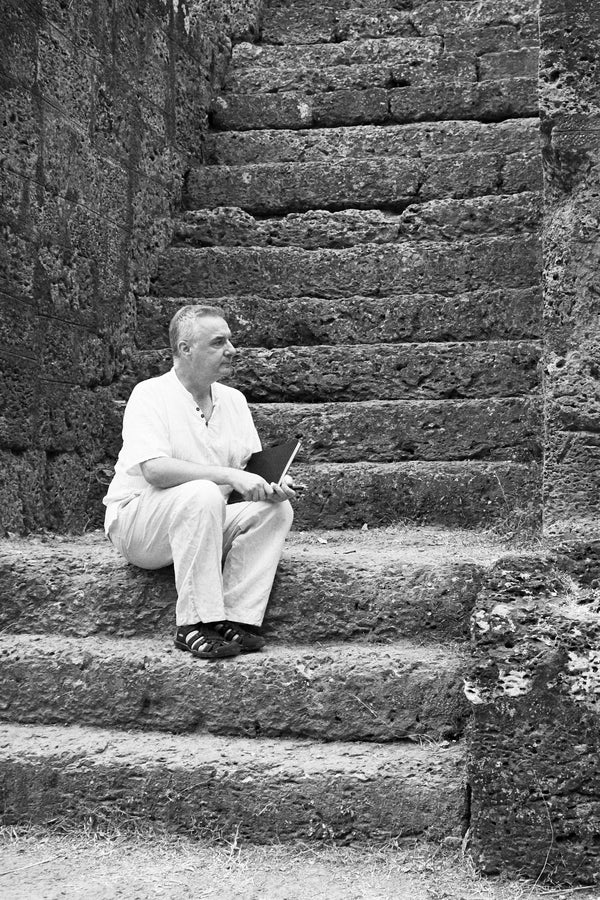Complimentary worldwide shipping on orders over $400 · No import tariffs for most countries
Complimentary worldwide shipping on orders over $400 · No import tariffs for most countries
Angkor Thom Temple Complex
1 min read
| Date: | Late 12th century and later (it includes some earlier monuments, such as the Baphuon Temple and Phimeanakas Temple) |
| Style: | Bayon (excluding some earlier monuments inside) |
| King: | Jayavarman VII (reign 1181 – 1220 CE) and successors |
| Cult: | Buddhist (with some earlier Hindu monuments inside) |
| Map: | Angkor Thom Temple Complex, Krong Siem Reap, Cambodia |
Angkor Thom (Khmer: អង្គរធំ, ‘Great City’) is one of the largest of all Angkor cities. It was founded in the late 12th century CE by Jayavarman VII and remained the capital of the kingdom until the first half of the 15th century CE.
Jayavarman VII was crowned in 1181 after defeating the Chams, and decided to fortify his capital city to protect it against further attacks. The result was Angkor Thom, a walled city with a square layout, covering an area of nine square kilometres (3.5 square miles), surrounded by wide moats and a high laterite wall with five imposing gates.
Although the city walls enclose a number of large and important temples, it can be argued that Angkor Thom was designed as one giant temple, with the Bayon Temple as its central sanctuary.
Angkor Thom overlaps the previous Angkor capital of Yashodharapura (end of 9th century CE), and incorporates temples of previous centuries, notably Baphuon Temple and Phimeanakas Temple.
It remained the capital of Jayavarman VII’s successors, and there are many additions and some remodelling.
The modern name 'Angkor Thom', dating from the 16th century CE at least, means ‘Great City’.
Within the Gates of Angkor Thom
Photographs from the Spirit of Angkor series by Lucas Varro
Encircled by moats and laterite walls, Angkor Thom is not merely a city of stone—it is a sanctuary of vision, where kings once dreamed with the gods and silence still keeps its throne. Here, the great face towers of Bayon gaze outward with the serenity of watchful Buddhas, while tree roots curl like incense smoke over forgotten doorways, and light finds its way through broken lintels and lichen-covered prayer halls.
Each photograph in this collection was made by Lucas Varro within the sacred bounds of Angkor Thom, using medium and large format black-and-white film, often in the hours just before dawn. Shaped through long exposure, chiaroscuro, and careful hand-toning, these images are not records of architecture—they are offerings. Meditations in silver and ash. Echoes of stillness carved into the breath of light.
Presented as limited edition, hand-toned archival pigment prints on Hahnemühle Bamboo paper, each work arrives with a Collector’s Print Package including poetic writings, curatorial reflections, and field notes drawn from the artist’s daily pilgrimages through this ancient walled city.
This collection invites you into the heart of Angkor Thom—not as a visitor, but as a quiet witness.
Join My Studio Journal
Receive occasional letters from my studio in Siem Reap—offering a glimpse into my creative process, early access to new fine art prints, field notes from the temples of Angkor, exhibition announcements, and reflections on beauty, impermanence, and the spirit of place.
No noise. No clutter. Just quiet inspiration, delivered gently.
Subscribe and stay connected to the unfolding story.

Join My Studio Journal
Receive occasional letters from my studio in Siem Reap—offering a glimpse into my creative process, early access to new fine art prints, field notes from the temples of Angkor, exhibition announcements, and reflections on beauty, impermanence, and the spirit of place.
No noise. No clutter. Just quiet inspiration, delivered gently.
Subscribe and stay connected to the unfolding story.









